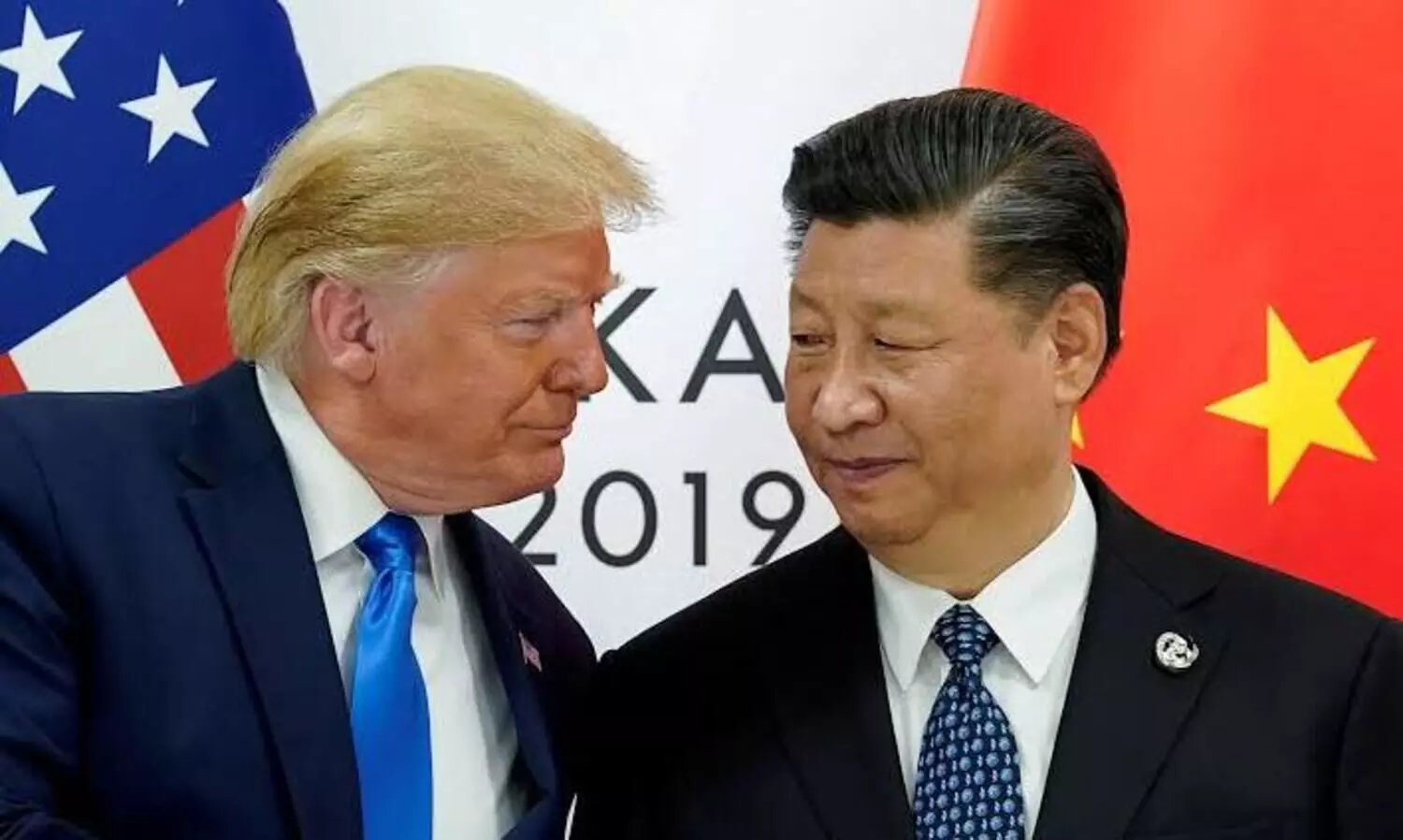China says it will 'fight to the end' after Trump threatens 50% additional tariffs

New York/Beijing: President Donald Trump has threatened China with an additional 50 per cent tariff, escalating the ongoing tariff war that has rattled global markets and drawn sharp rebukes from Beijing. Trump’s threat came in response to China’s recent imposition of a 34 per cent tariff on US imports, a move that matched the reciprocal levy Trump announced last week. “If China does not withdraw its 34% increase above their already long-term trading abuses by tomorrow, April 8th, 2025, the United States will impose ADDITIONAL Tariffs on China of 50%, effective April 9th,” Trump wrote on Truth Social. He added that all negotiations with Beijing on tariffs would be terminated. If implemented, the new levies would raise total US tariffs on Chinese goods to a staggering 104 per cent — a combination of the original tariffs, a 20 per cent penalty for fentanyl trafficking, and the 34 per cent already announced. Trump warned that the tariffs are a necessary step in rebalancing trade relations and asserted, “I don’t mind going through it because I see a beautiful picture at the end.”
Reacting strongly, China’s Commerce Ministry said that it would “fight to the end” and take further countermeasures. Calling the US tariffs “completely groundless and a typical unilateral bullying practice,” the ministry said, “The countermeasures China has taken are aimed at safeguarding its sovereignty, security and development interests, and maintaining the normal international trade order.” It warned that the US threat is “a mistake on top of a mistake” and branded the American approach as “blackmailing.” The possibility of tariffs exceeding the value of imported goods has sparked concern that the trade war could further damage global markets. The US stock markets, already reeling from volatility, showed only slight recoveries. The NASDAQ managed a 0.1 per cent gain on Monday, while the broader S&P Index fell 0.23 per cent. Earlier, there had been a short-lived uptick when rumors surfaced of a potential 90-day pause on reciprocal tariffs—rumors quickly debunked by the White House.
Federal Reserve Chair Jerome Powell has warned that the tariff escalation could spur inflation, noting, “There’s a lot of waiting and seeing going on, including by us,” indicating caution from the Fed amid growing market uncertainty. Trump’s position remains firm. After a meeting with Israeli Prime Minister Benjamin Netanyahu, Trump stated the US was making “tremendous progress” in trade negotiations with several countries, including Japan and India. He spoke to Japanese Prime Minister Shigeru Ishiba, who agreed to send a delegation for talks, and US Secretary of State Marco Rubio discussed reciprocal tariffs with India’s External Affairs Minister S. Jaishankar. European Commission President Ursula von der Leyen offered the US a “zero-for-zero” deal on industrial goods, including cars, but warned that the EU was also prepared to impose reciprocal tariffs in two stages if the US did not reciprocate. She emphasized the EU’s readiness to explore “vast opportunities” in trade with other countries, distancing the bloc from overdependence on US trade ties. Though no tariff relief for Israel was announced, Netanyahu said Israel would eliminate its trade deficit with the US and expressed hopes it could serve as a model for other nations.
US goods trade with China totaled $582 billion in 2024, making it one of the US’s largest trading partners. The trade deficit with China that year ranged from $263 billion to $295 billion. As the tariff war escalates, concerns remain that the costs of these import taxes—ultimately paid by US companies—will be passed on to American consumers. Despite uncertainty in the markets and global backlash, Trump and his team show no signs of backing down. While China insists it will resist “to the end,” Trump’s administration views the current pain as a necessary path to a “fair and balanced” trade landscape.



